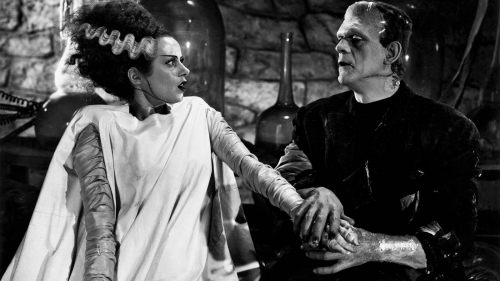Be Grateful For Childish Gambino’s THIS IS AMERICA
Between releases by Janelle Monáe, Leon Bridges and Donald Glover in the last few weeks, it’s been an embarrassment of riches for fans of black popular music. But where Bridges pays homage to the genre’s past and Monáe embodies a progressive future, Glover feels rooted in the present in a way that offers a more complex and multifaceted look at popular culture, representation and - as a result - more authentic artistic expression that caters more to the identity and voice of black artists than the invariably narrower appetites of white consumers.
Dropped Saturday alongside his appearance on Saturday Night Live, Glover’s “This Is America” (and especially its music video) examines and encapsulates our current ouroboros of cultural wokeness - self-indictment of the acknowledgment that wanting to feel good in the moment is a necessity when there’s so much to be upset about, but also a frivolous distraction from more serious things that probably don’t stoke enough outrage. It also marks another recent high-water mark in mainstream culture where an artist of color speaks truth to power, makes money while doing it, and offers a cost-benefit analysis of the exchange.
Musically, “This Is America” exudes the same chameleonic style as much of Glover’s work as Childish Gambino; whether or not you feel he makes them his own, the rapper and singer’s inspirations and influences always feel conspicuous, at least if you’ve ever listened to Kid Cudi, Kanye West, Andre 3000, or (on Awaken, My Love!) Sly Stone and Bootsy Collins. With its choir of cheerful voices, “America” evokes Chance the Rapper’s pop-gospel ebullience, but pairs that with a swirling, gut-churning drumbeat that does too much to serve as “just” the backbone of a new trap anthem; it’s the disorienting foundation for a dialectic about the language of contemporary hip-hop that unfolds between the verse and chorus. (That its sinister bassline sounds alarmingly similar to the music Thomas Bangalter composed for Gaspar Noe’s Irreversible only adds to the disorientation.) The cumulative effect is a song that sounds uniquely like Glover’s - the Glover of Atlanta Season Two and emboldened by his Grammy win for “Redbone:” a precise act of deception, one more transparently explored in the music video, that takes the form of a hip-hop banger to disguise the content of a harangue.
And then there’s the video, four minutes and four seconds of “continuous” action as a shirtless Glover struts his way through a warehouse filled alternately with backup vocalists, dancers and a variety of violent reprisals, last of which against the artist himself. Ira Madison compared the clip to Michael Haneke’s Funny Games “in that it invites the viewer to take part in a tragedy, while simultaneously entertaining them, and then condemns the viewer for participating.” Though the mileage on its provocation will vary, he’s not wrong, even if it feels like artists of color are in a unique position (if by no means must they bear the responsibility) to create reflexive portraits of the way in which their work has been absorbed and commoditized by the white mainstream. Glover has frequently discussed his own middle-class upbringing and reflected on race in his writing, acting and musical work, so the most distinctive element of the song and its video is precisely how caustic it is, particularly in the wake of his recent New Yorker profile - published on the eve of the premiere of Atlanta Season Two - where the comedian and writer waxed philosophical about his relationship to commercial and critical success with regard to the mainstream opportunities he’s been offered. "This is America" feels like something he’s working out in the most fearless, confrontational terms possible.
Whether or not you catch every reference or understand every choice in the video, however, it has a greater symbolic meaning than even the messages it’s packed into that short running time: black artists are gaining - creating for themselves - increasing freedom to explore and articulate controversial (read: threatening to white America) themes in their work. Quite honestly, their very existence within the mainstream feels like a threat to many in Trump’s USA, but the reciprocal publicity of Glover’s appearance on SNL and the release of the Gambino video catapults him center-stage into the public eye unlike he’d virtually ever been seen before. (Suffice it to say that will likely change with the release of Solo: A Star Wars Story.) This one-two punch follows by just two weeks Monáe’s Dirty Computer, which marked her first time creating a full album under her own name, and was accompanied not only by an epic, cheeky, sexually-charged film, but the more personal declaration that she’s “pansexual,” a term that sent even the most open-minded whites googling its definition.
What’s remarkable about these releases and revelations is not that they exist; from Little Richard to Labi Siffre, countless black artists have challenged traditional notions of gender, sexuality and culture. It’s that they, and other performers like Ware, SZA, Kendrick Lamar, Big Freedia, Beyonce and many more, are doing so with the machinery of mainstream promotion, and refusing to cater to a marketplace that typically demands obeisance to its commercial needs at the expense of artists’ creative ones. Moreover, their individual growth and evolution as creators, in a myriad of media forms, not only inspires discussion and debate, but legitimate success, without compromise or concession. Not content to be a worldwide phenomenon as a music artist, Rihanna radically transformed the discussion around cosmetics with her Fenty Beauty line, which sold out immediately after offering options to women of color; Lena Waithe won an Emmy for Master of None after writing a fictionalized version of her own coming out story, then went on to create The Chi for Showtime, and then appeared out, proud and makeup-free on the cover of Vanity Fair.
As such, “decoding” “This Is America” feels less important than acknowledging the historical and cultural context into which it was born, beneficial as it might be to do so for an audience unfamiliar with the lexicon of the culture that it’s exploring, or the context of the individuals who made it. (That said, if you don’t follow Dear White People creator Justin Simien onTwitter, he created a deeply important and thought-provoking thread explaining a few of the images in the video that can fairly be described as “essential” to understanding large portions of its narrative.) Not to mention, Glover’s recent history as an artist seems to studiously avoid too many neat or tidy explanations, even if the work is undeniably seeded with multiple opportunities for interpretation. In which case, “This Is America” gives us all something to be grateful for: something that moves our bodies and our minds at the same time, for reasons different from one another, but ones that are inextricably tied to each other, the art itself, and our responsibility as its consumers.



